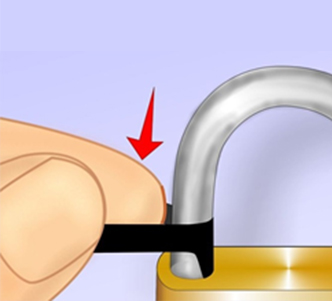This guide explores the shim—a specialized lock bypass tool—detailing its history, functionality, and practical applications. Designed for educational purposes, this post explains how shims work, how to identify vulnerable locks, and methods for creating DIY shims.
A shim is a thin, flexible tool used to bypass padlocks by retracting the spring-loaded latch that secures the shackle. Unlike traditional lockpicking, shimming exploits mechanical weaknesses in spring-operated locks, making it a non-destructive entry method.

Lock bypass techniques have existed as long as locks themselves. While ancient Egyptian pin tumbler locks (4000 BCE) were vulnerable to rudimentary tools, modern shimming emerged with mass-produced spring-latch padlocks in the 20th century. High-security locks later countered shimming with ball bearings, but basic models remain susceptible.
Not all locks are vulnerable. Key characteristics include:
Shims can be crafted from everyday items:
| Material | Pros | Cons |
|---|---|---|
| Aluminum cans | Durable, easy to cut | Requires careful shaping |
| Plastic bottles | Flexible, readily available | Less sturdy, slips easily |
| Stainless steel | Reusable, strong | Harder to source/cut |
Steps to Make an Aluminum Can Shim:
Click Here to download printable pdf file containing the shim design.
Tools Needed: Shim, pliers (optional).
Shimming is a valuable skill for locksmiths and homeowners but illegal without permission. Always:
Note: This guide is intended for educational purposes only. Unauthorized lock manipulation is illegal and unethical. Use this knowledge responsibly. (All diagrams are conceptual and omit sensitive details to prevent misuse.)
Whether you’re searching for “locksmith near me” for a residential lockout, commercial lock installation, or automotive key replacement, Maple Leaf Locksmith is your trusted solution. Call us today for a free estimate and fast, reliable service across the Greater Toronto Area!
Your trusted locksmith in Toronto for all residential, commercial, auto locksmith, and emergency needs.


